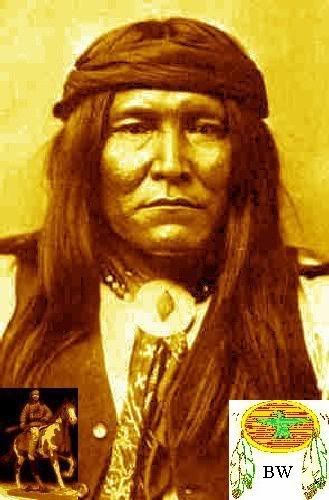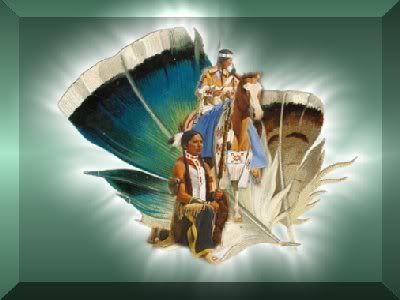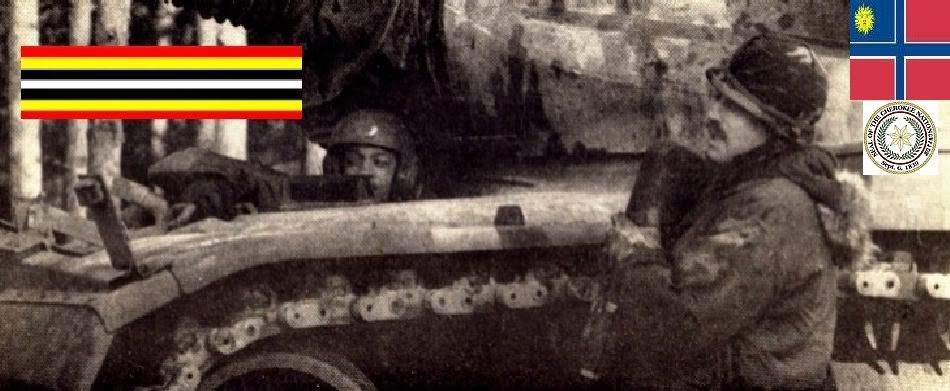
Chief Cochise
Warriors Citation
From the Apache meaning “Hardwood,” Cochise was the son of a Chiricahua Apache chief; he in turn became leader
of the band following the death of his father. He married a daughter of Magnas Coloradas, the celebrated chief of the Mimbreño
Apache. The Apaches lived in southern Arizona and western New Mexico, where they had been brutally victimized by Spanish
and Mexican scalp hunters and slave traders. Although the enmity between the peoples was intense, the Chiricahua were initially
friendly toward the newly arrived Americans in the 1850s. Feeling that they could obtain a certain degree of help from the
well-armed Whites, Cochise met with Major Enoch Steen in 1856, and agreed to permit Americans to pass through his country
en route to California. Shortly afterwards, some of the Apaches worked regularly for a stagecoach station at Apache Pass,
cutting firewood and exchanging it for supplies. This harmonious situation was upset by stupidity. In 1861 Cochise was summoned
to see Lieutenant George N. Bascom at Apache Pass. When he arrived, under a flag of truce, with five other Chiricahua warriors,
he was accused of having kidnapped the child of some White settlers. He denied any guilt: the child in fact had been abducted
by another band. Refusing to believe him, Bascom arrested the Native Americans; in the melee, Cochise was badly wounded.
He managed to escape from confinement by cutting through the side of the tent with his knife. Some days later he captured
three White settlers whom he offered to exchange for his companions. Bascom stubbornly refused and demanded the return of
the kidnapped child unharmed. Furious that Bascom would not believe him, Cochise killed his prisoners; whereupon, the Lieutenant
hanged the Chiricahua warriors in retaliation. With his savage action, the long and bitter hatred for Mexicans was broadened
to include Americans. Cochise and his father-in-law joined forces to destroy the White settlers and drive them from Apache
lands.

Over the next ten years this action resulted in an appalling loss of life on both sides. But even worse, the warfare could
not resolve the problem of the Apache rights to their own land, nor even provide an acceptable reservation in territory to
which they were accustomed. Cochise and Mangas Coloradas began attacking settlements and quickly succeeded in closing off
Apache Pass, the only ready route to the west in southern Arizona. They very nearly forced the Americans out of Arizona altogether,
particularly during the Civil War period, when troops were recalled to the east. In 1862, General James Carleton arrived
from California, determined to reopen the southern route. At Apache Pass, some 500 Apaches were able to hold off 3,000 California
Volunteers, until they were finally forced to withdraw after Carleton brought in the artillery. In a skirmish the next day,
Mangas Coloradas was badly wounded in the chest. Cochise, determined to save him, placed him in a sling and traveled 100 miles
south to Janos, Mexico, where a surgeon lived. Cochise is reputed to have demanded that the surgeon make Mangas Coloradas
well, or the town would die. Both Mangas Coloradas and the town were saved, although the next year the older was warrior
murdered while in a military camp flying a truce flag. After the death of Coloradas, Cochise became the principal warrior
chief of the Apache nation. Although forced deeper and deeper into the fastness of the Dragoon Mountains in southern Arizona,
Cochise and some 200 warriors were able to resist all efforts of the Army to capture or exterminate them. They continued their
relentless raids on White settlements, and in 1871 General George Crook was given command of the Army’s Department of
Arizona. He had much experience with Native Americans and realized the senselessness of annihilatory warfare; he refused to
use such actions, trying instead to satisfy the needs of both peoples. Recognizing that the only way to conquer was to make
peace with each Apache band individually, and use these bands to scout the rest, he developed a highly effective group of
Apache scouts who soon became famous throughout the territory. Again the White goals were being defeated by their own politics;
peaceful groups of Apache’s were being sent to reservations far from their native country—Bosque Redondo, or Fort
Tularosa, in New Mexico. When Cochise learned of the government’s intention to remove his band from Cañada Alamosa
to Tularosa, he once more went into hiding in the Dragoon Mountains. He emerged only when he met with General Oliver O. Howard
in 1872 from whom he secured assurance that the Apache would have their own reservation in the Chiricahua Mountains. When
Cochise met with the White authorities, he promised that there would be no more raids if the Chiricahua were guaranteed a
reservation in their own territory. He kept his word and brought his 200 people onto the reservation in the fall of 1872.
Shortly after, 600 more Indians joined him there, and he continued to live peacefully until his death from dyspepsia on June
8, 1874. He was buried near Bowie, Arizona, leaving his sons Taza (who succeeded him as chief) and Naiche, a younger man.
All who dealt with Cochise regarded him with respect. He was measured at one time, and was 5’9½” tall, weighing
169 pounds, and recorded as being a broad-shouldered, powerfully built man who carried himself with dignity. While gentle
in manner during normal occasions, he was capable of extreme cruelty in warfare, torturing his victims as he and his people
had learned to do from their Mexican enemies. But he was intelligent and sensitive as well, recognizing from the start that
peace was the only possible insurance for the survival of his people—he simply wanted a just and lasting peace.From:
historical accounts & records



LINK TO BRAVEHORSE WARRIORS VOLUME TWO
|

